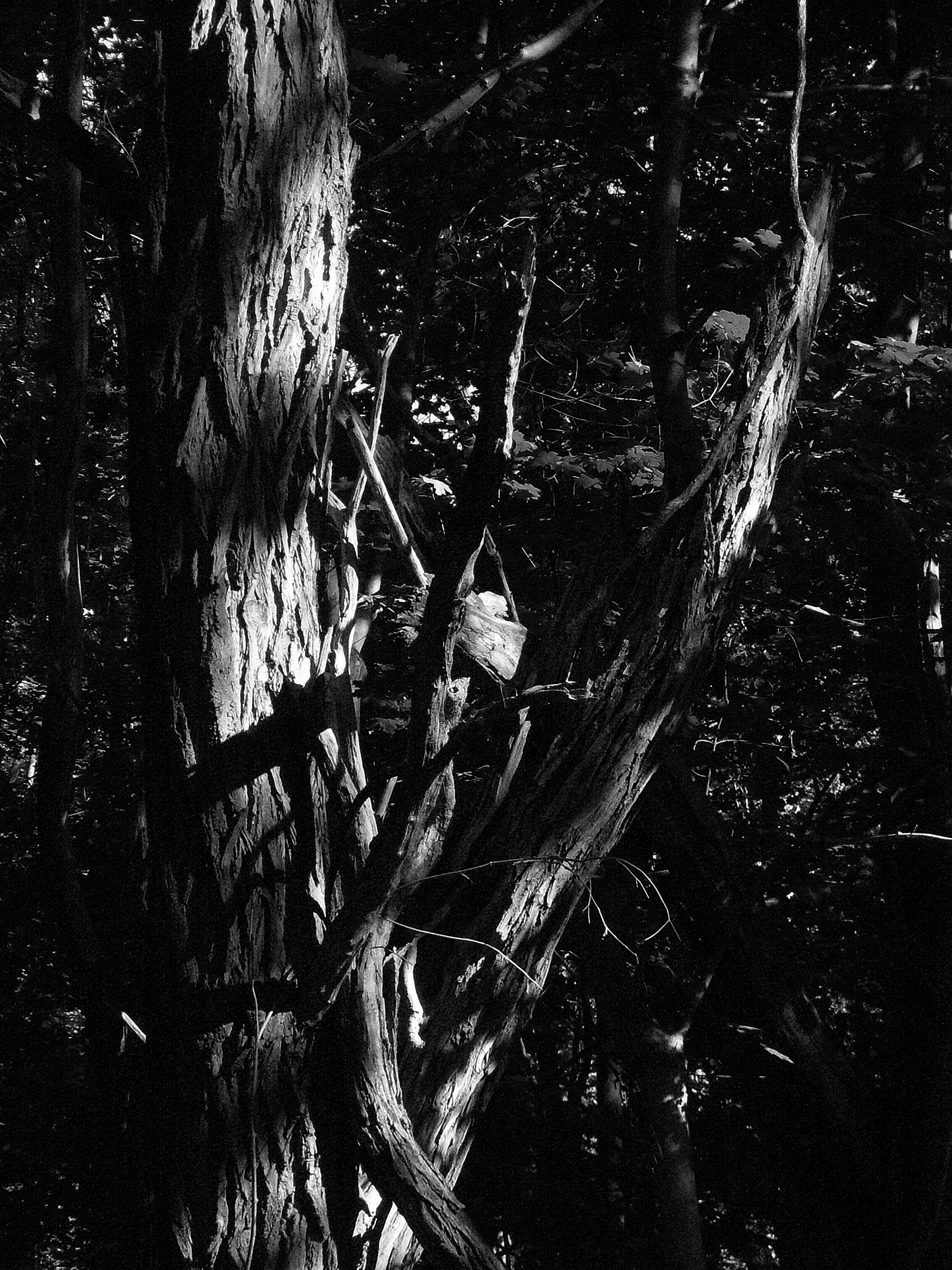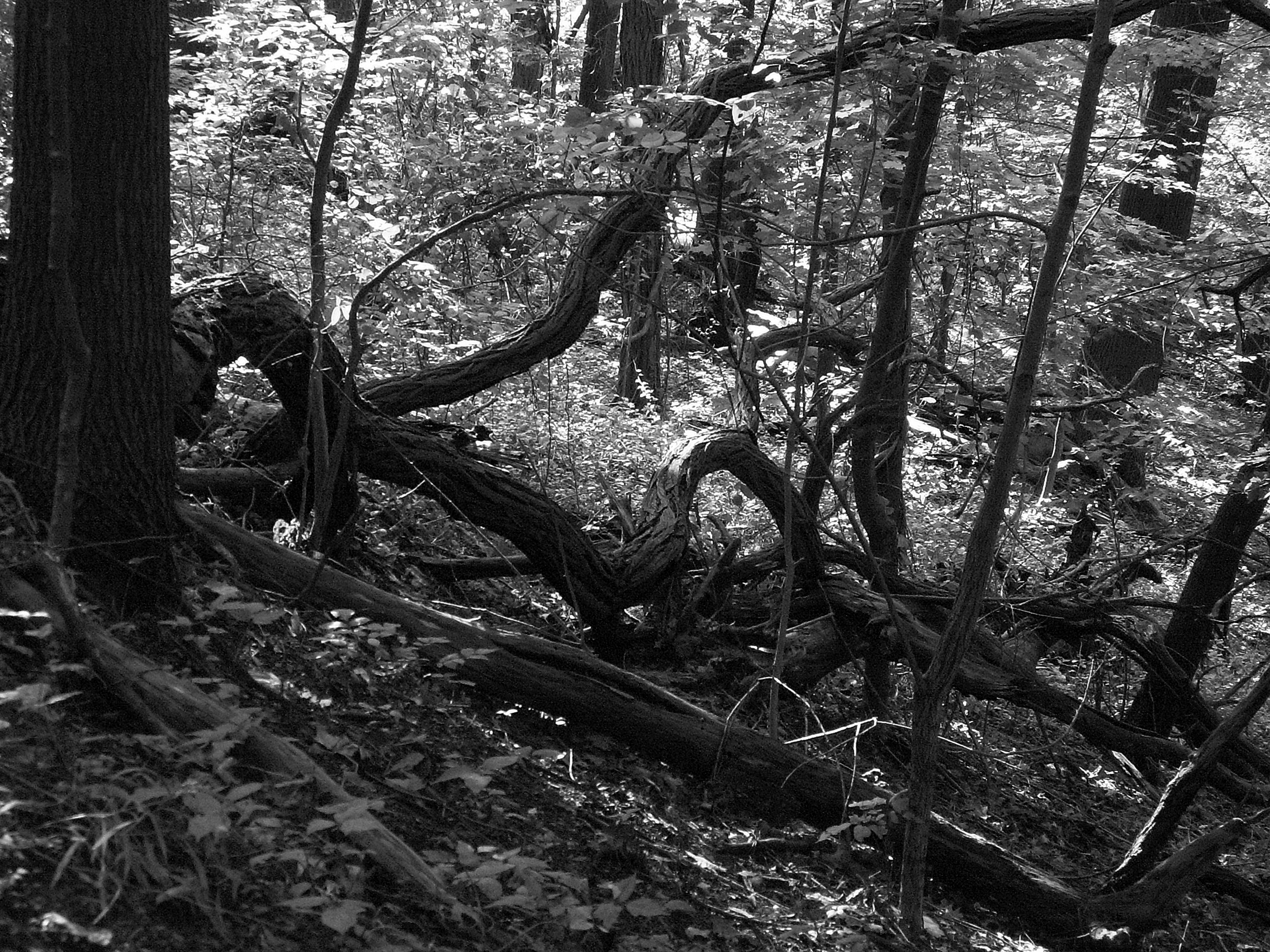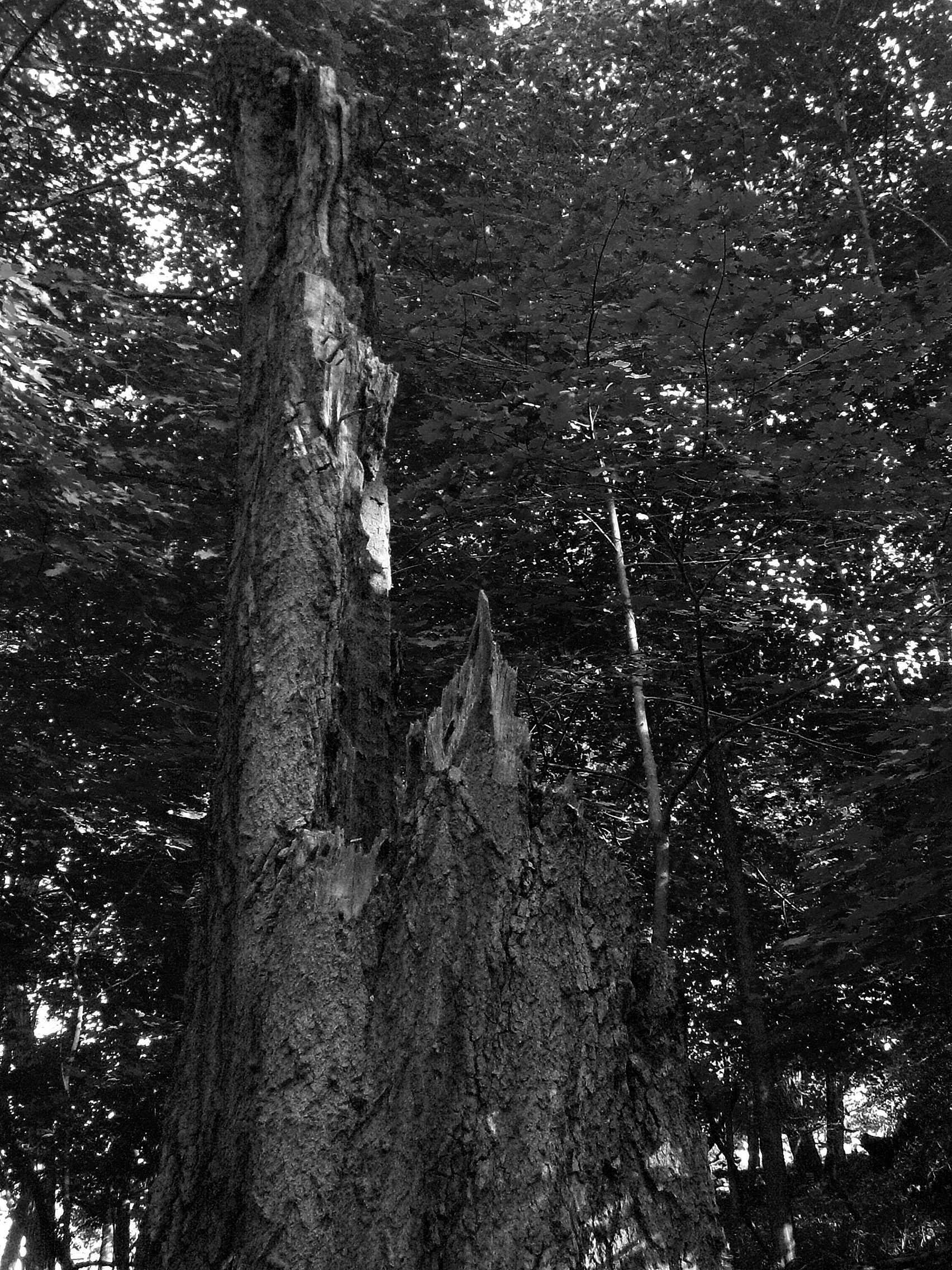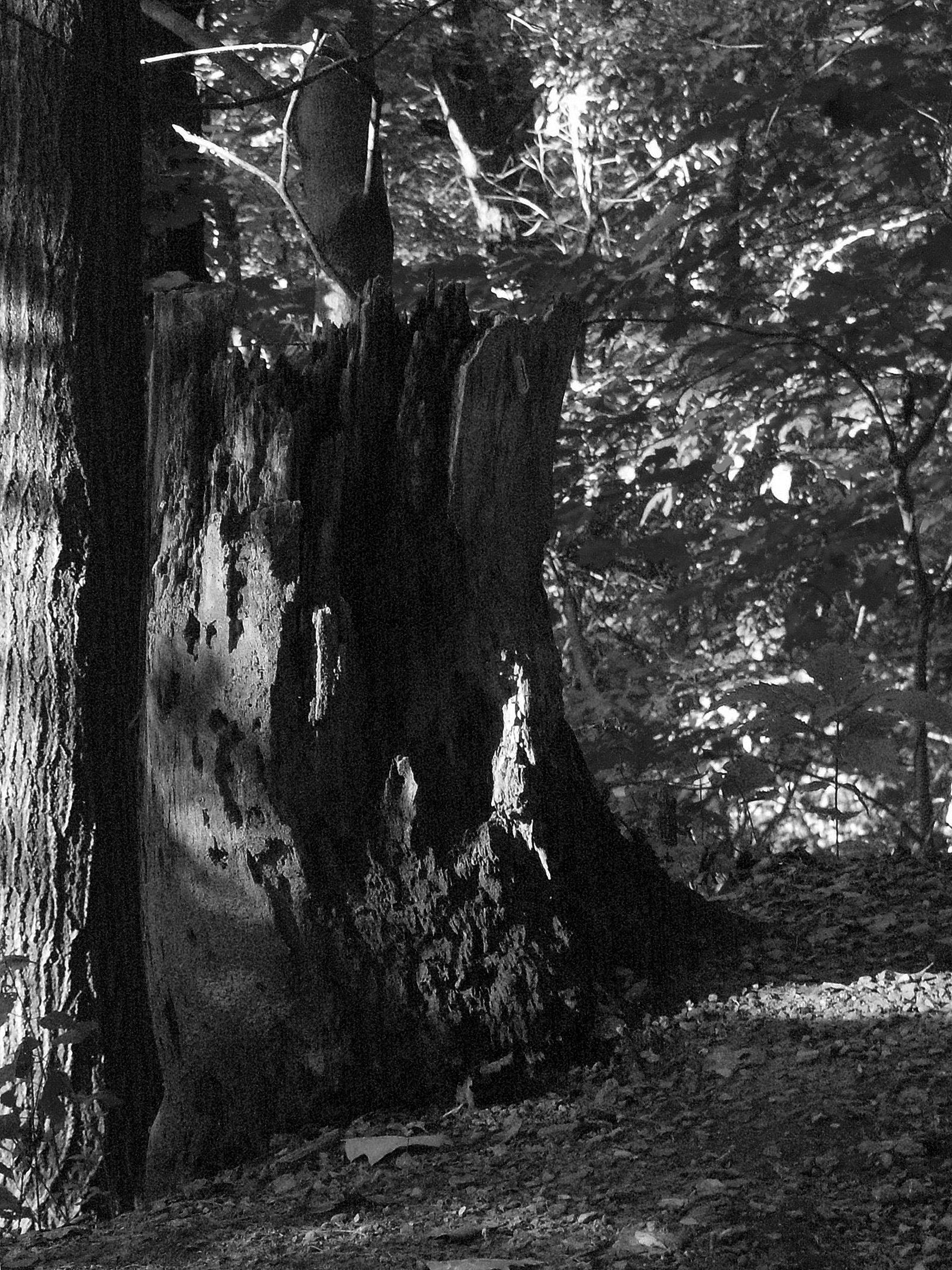
-
St. Bernard Church and School, Mount Lebanon
5 responses
-
Shapes in the Woods
A selection of interesting logs, stumps, and trunks in Riverview Park.
Camera: Konica-Minolta DiMAGE Z3.
-
Green Tree Water Tower

This enormous tower is a favorite visual landmark for small-plane pilots. It’s visible from miles away on the ground, too, depending on where you may happen to be, and it’s the most distinctive feature of the otherwise rather generic suburban borough of Green Tree.
The borough seems to have decided on spelling the name “Green Tree” as two words, but it is pronounced as one word, and the main street of the borough is still spelled “Greentree Road.”
Camera: Canon PowerShot A590 (hacked).

-
Stephen Foster Window, Allegheny Cemetery Mausoleum
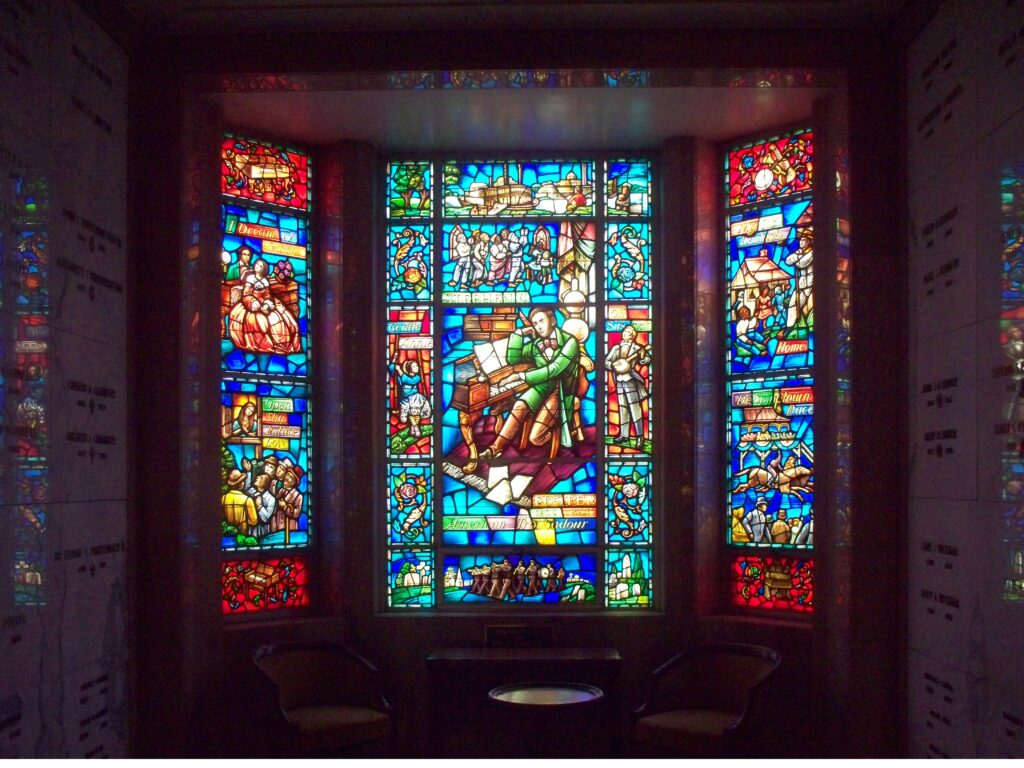
The Allegheny Cemetery Mausoleum, or “Temple of Memories” (as the cemetery calls it now), was built in 1960. It is filled with stained glass by the Willet studio of Philadelphia and the Hunt studio of Pittsburgh. The two distinct styles are very different, but Father Pitt does not know which is which.
This Stephen Foster window is the centerpiece of the whole first floor of the mausoleum, which is appropriate. Thousands of rich and important people—politicians, robber barons, and even a few honest philanthropists—are buried in Allegheny Cemetery. But the only resident anyone really cares about is Stephen Foster, who made us dance and sing and weep, and died in poverty. (There is also a small cult of Lillian Russell, and Father Pitt would be delighted to see a Lillian Russell window in some future expansion of the mausoleum.)
This window includes something that delighted old Pa Pitt beyond all reason: the only stained-glass representation he has ever seen of a parlor organ.
Camera: Kodak EasyShare Z1485 IS.
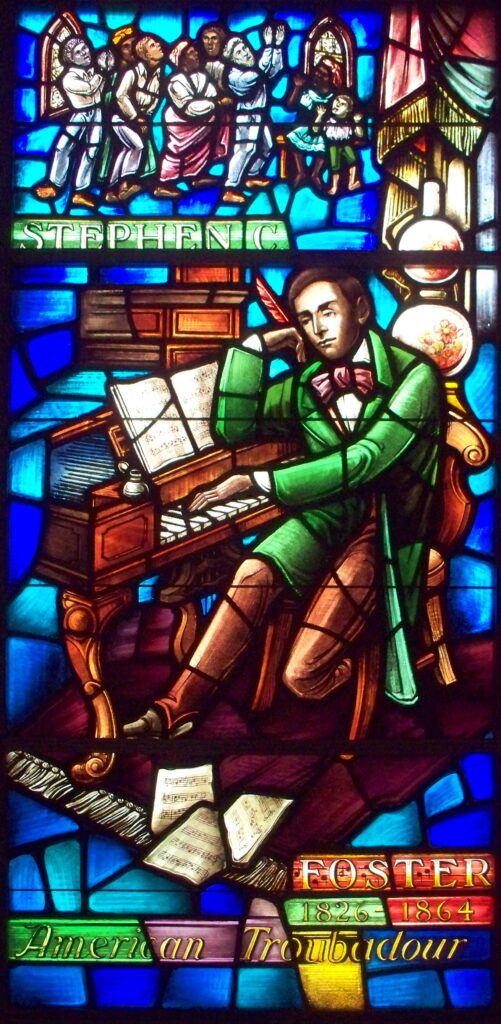
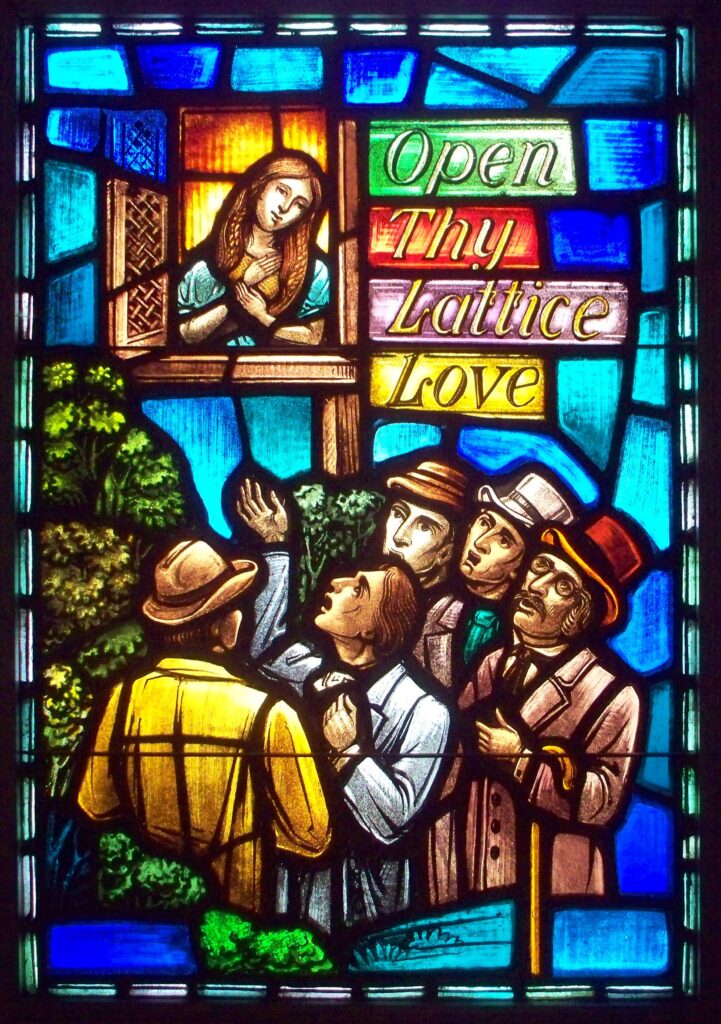
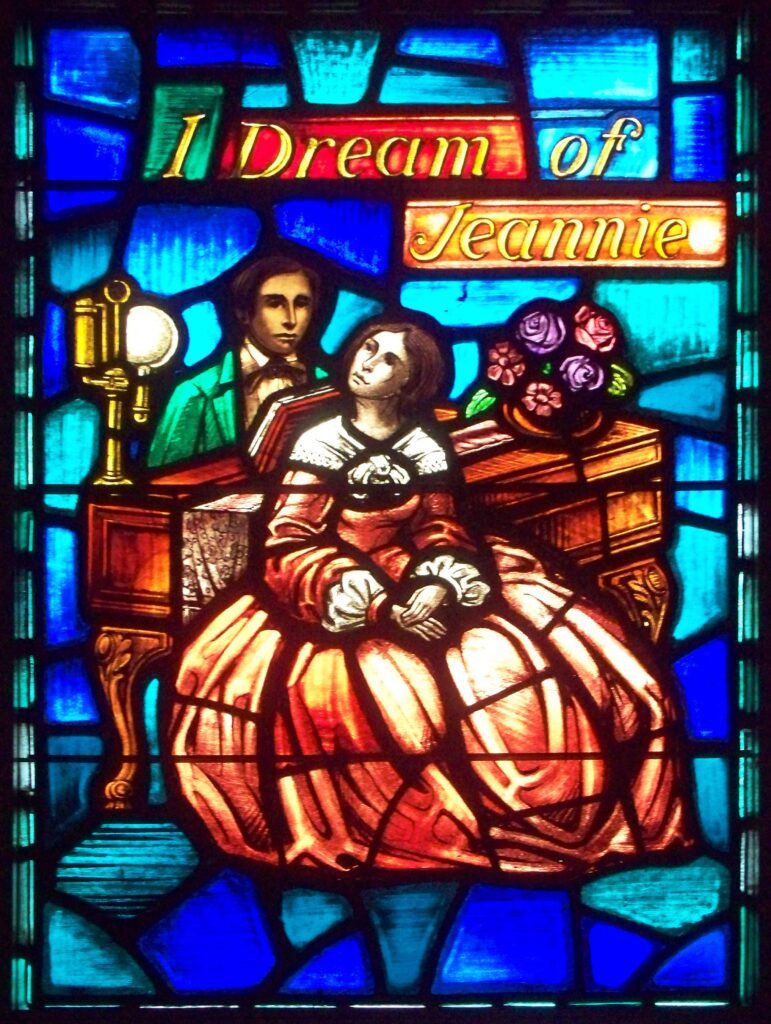
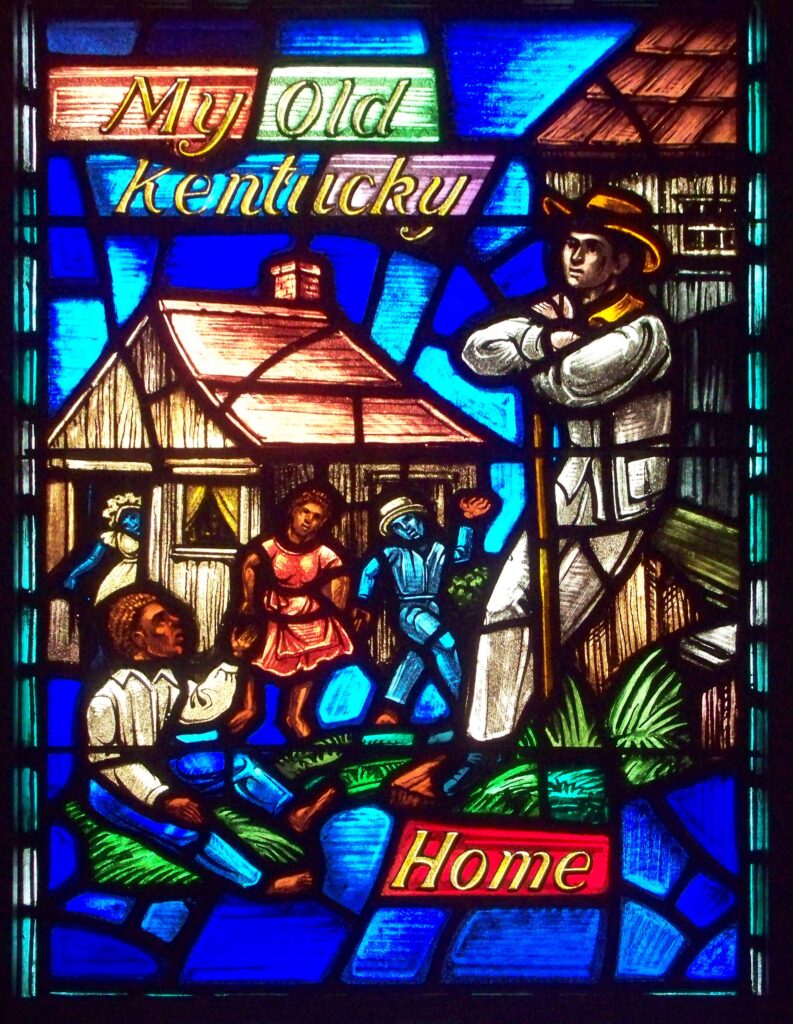
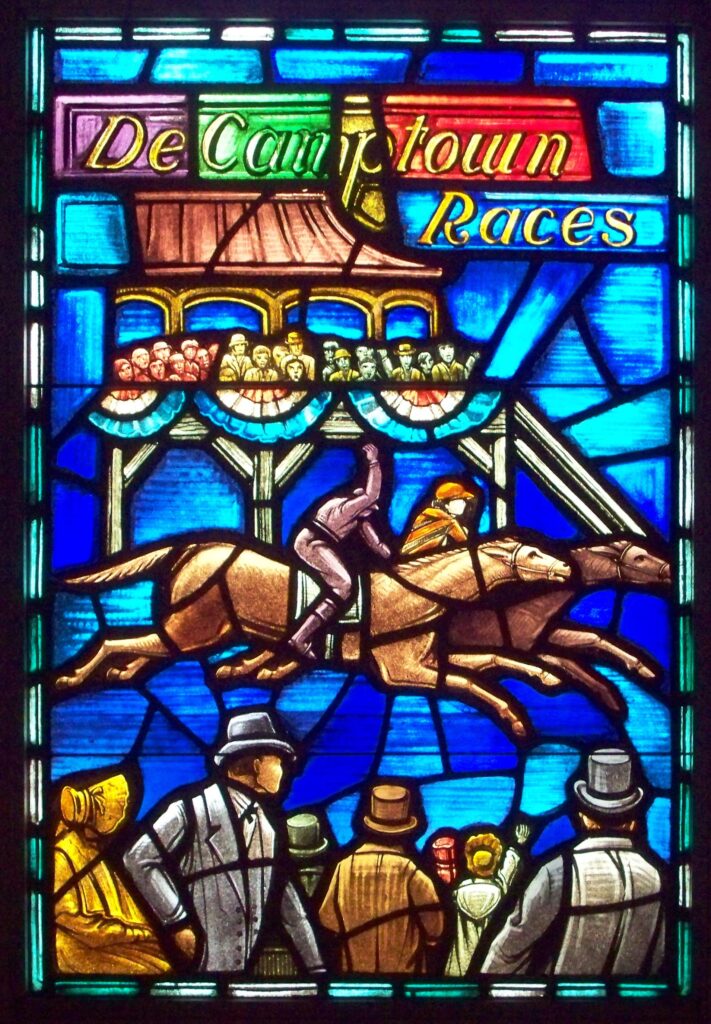

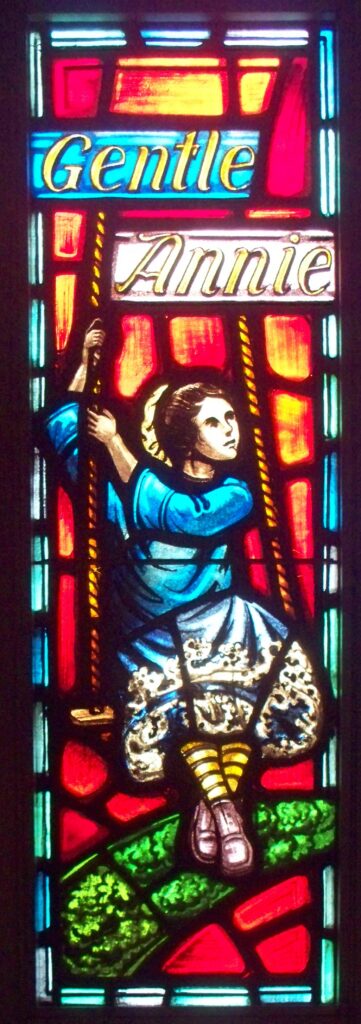
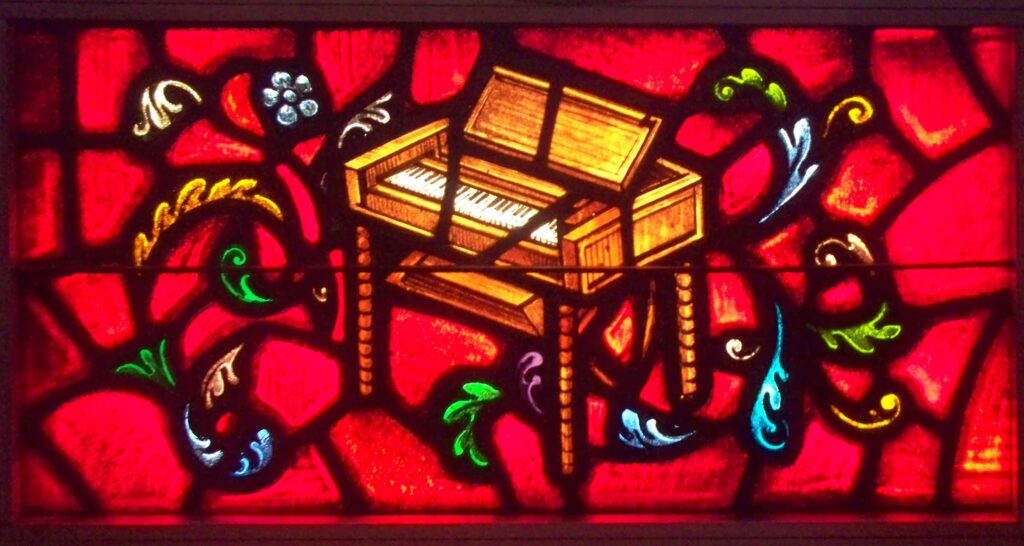
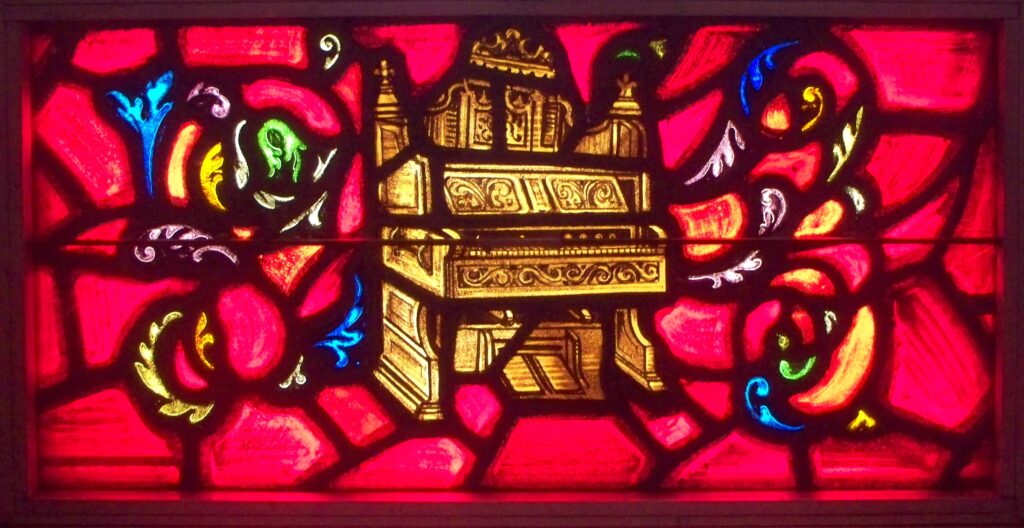
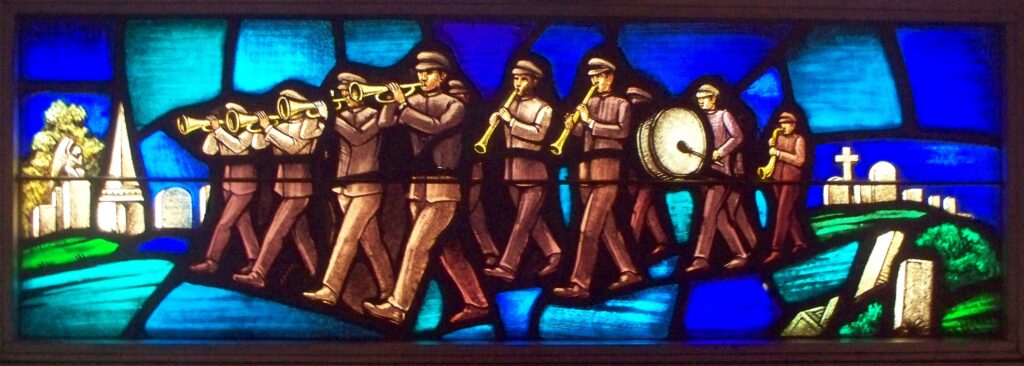
-
Early Fall in the Woods

Leaves are starting to turn along the Liberty Trail, Kane Woods Nature Area, Scott Township.
Camera: Konica-Minolta DiMAGE Z3.
-
Tomatoes That Hate You



The Phipps Summer Flower Show this year was devoted to “weird and wonderful” plants. It closes tomorrow, though you’ll be able to see bits and pieces of it a while after that during the gradual transition to the Fall Flower Show.
Here are two members of the tomato family that want to kill you. Above, Malevolence (Solanum atropurpureum) from Brazil, absolutely stuffed with poisons and guarded by horrible thorns, but decorative in its own quirky way. Below, Porcupine Tomato (Solanum pyracanthos) from Madagascar, which is also prickly and toxic, but quite beautiful in flower.
Camera: Konica-Minolta DiMAGE Z3.


-
Blackberry Lilies in the Phipps Outdoor Garden

Although they are grown more for their spotted orange flowers, Blackberry Lilies (Iris domestica) are almost as interesting for the decorative black seeds they produce. These were growing in the Outdoor Garden at Phipps Conservatory.
Camera: Konica-Minolta DiMAGE Z3.

-
Presbyterian Hospital

Presbyterian Hospital was built in 1938 as a splendid Art Deco skyscraper with wings. The original design is impossible to appreciate from nearby, since other buildings have grown up to obscure it. But if we take a long view of it from Schenley Park, we can get some idea of how the architect intended it to be seen.
The central tower is topped by yet another imitation of the Mausoleum at Halicarnassus, joining Allegheny General and the Gulf Tower in the style old Pa Pitt likes to call Mausoleum-on-a-Stick.
Camera: Konica-Minolta DiMAGE Z3.


